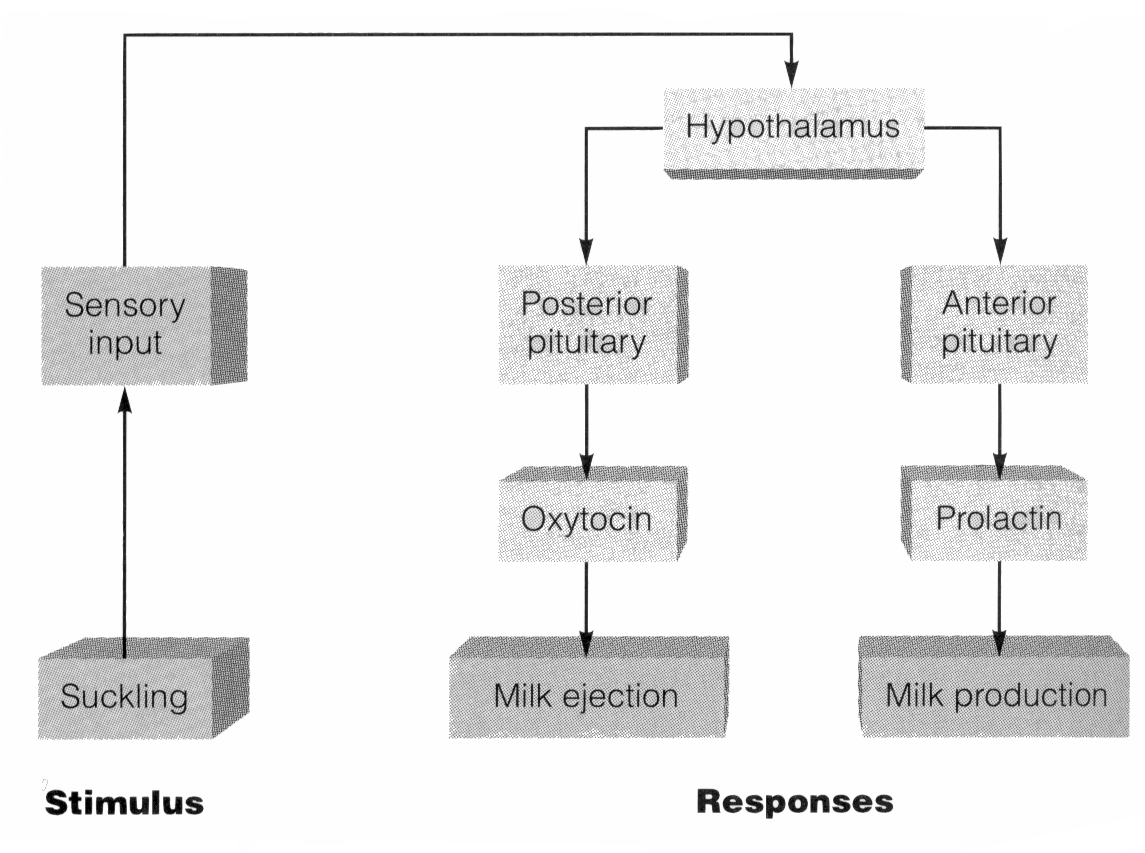In week 41 in biology 2p we started learning about hormones.
The course started off with a song by Frank Sinatra, which, by looking at the lyrics, we decided was about a certain hormone called oxytocin.
So what is oxytocin? Oxytocin is one of the most interesting hormones, which is centered in the brain. It deals with maternal instincts, love impulses, orgasms, but also anxiety and social recognition. When there is a lack of oxytocin, the individual may go through stages of depression, but if oxytocin is in abundance, then the individual is considered to have a higher and sharper sense of instinct -- some would go as far as saying it can give them unnatural attributes.
Now that we learned what oxytocin is, we can go ahead and start with the basics of hormones.
What is a hormone? A hormone is a messenger molecule that is transported by the circulatory system to get to organs in order to regulate the person's behaviour. Hormones work slowly, traveling through your bloodstream. They affect many processes such as metabolism, sexual function, mood, growth and physical development, which is why during your teenage years hormones are most at work.
The endocrine system is made of glands and organs, and is where hormones are produced, stored and released. The glands are stimulated by the nervous system.
Hormones can come from three different origins: peptide, amine or steroid.
A steroid hormone is derived from cholesterol and deals with a lot of aspects, though mainly it regulates your metabolism and controls your sexual characteristics. Examples of steroid hormones are
An amine hormone mostly deals with digestion, and is mostly found in the intestinal or pancreas tissues.
A peptide hormone is made of protein. An example of a peptide hormone is actually one we saw earlier, which is oxytocin.
In week 42 each student of the course presented a disease of their choice that affected the brain or the nervous system. Here is the list:
Alzheimer's Disease
Alzheimer's is the most common version of dementia and usually comes with old age, patients diagnosed with it almost always being over 65 (though there are rare cases for younger patients). Alzheimer's is a disease that causes memory dissipation, starting out in stages of short term memory loss, then progresses into long term.
It was discovered in 1906 by Alois Alzheimer, a psychiatrist who first noticed it on one of his patients called Auguste D who had been suffering of it since 1901. It was made an official disease by Emile Kraepelin later on after more patients were discovered to have the same symptoms as Auguste D.
Usually, AD patients have a loss of function in the temporal lobe, the part of the brain that deals with memory. Here is a photo of how the brain deteriorates itself, to the left being a healthy brain, and to the right a case of alzheimer's:
There has so far been no discovered cure.
Mad Cow Disease
Bovine Spongiform Encephalopathy, otherwise known as mad cow disease is a neurodegenerative disease that can be caught by eating cow meat. It was named Mad cow disease because when cows got infected with it, their behavior changed, and they went crazy -- or mad. The human version is called Creutzfeldt-Jakob disease, and it affects the humans brain.
This disease is not contagious, and can only be caught if the person eats cow meat that contains contaminated central nerve tissues. The disease can't be transmitted from human to human, only by eating contaminated meat.
The disease is fatal. Once a patient is infected with it, their lifespan shrinks to more or less 13 months.
There was a big Mad cow outbreak in the UK back in 2009, when 177 were killed by it. Since then, the US developed a law that stated that all brain and spinal cattle and cow meat is forbidden from being sold.
Epilepsy
Epilepsy is a general disorder, most common between teenagers and elders.
Epilepsy happens when the brain recieves too many light and color signals that flash too fast, then becomes confused and triggers seizures.
Here is an example of something that would induce epilepsy (open at your own risk):
So far, there has been no cure for epilepsy, only drugs that make the seizures stop but cannot prevent new ones from happening in the future.
Congenital indifference to pain
Congenital indifference to pain is a rare disorder that consists of the individual being able to feel touch or temperature, but not any physical pain.
How this happens: when a normal person gets hurt, the pain receptors (nociceptors) transmit a message through the nervous system (peripheral nerve) to the brain in order to tell that you're hurt. Here is a photo oh how it works:
For patients suffering from congenital indifference, the problem isn't that the brain doesn't recognize the pain, it's that the nerve tissues are either weakened or non existent, meaning that in the brain never gets any pain message since there's nobody sending them.
Congenital indifference to pain is not something contagious, it is actually very rare, and can only be transmitted if both parents have a copy of the specific chromosome, making it a genetic disease.
Broca's aphasia
Broca's aphasia, otherwise known as expression aphasia, is a disorder that is characterized by the loss of being able to talk.
The most common cause of this disorder is a stroke, which is caused by a lack of brain oxygenation. The part of the brain usually affected and damaged is the bronca, hence the name of this aphasia.
Brian's aphasia cannot be fully cured, but can become better with speech therapy and other expressive activities depending on how severe the case is.
Here is a video of how patients with Broca's aphasia speak:











.JPG)






